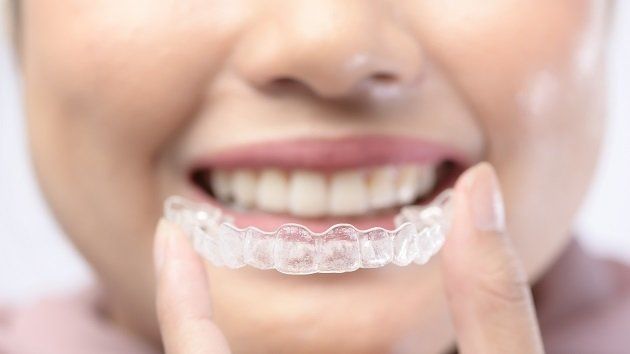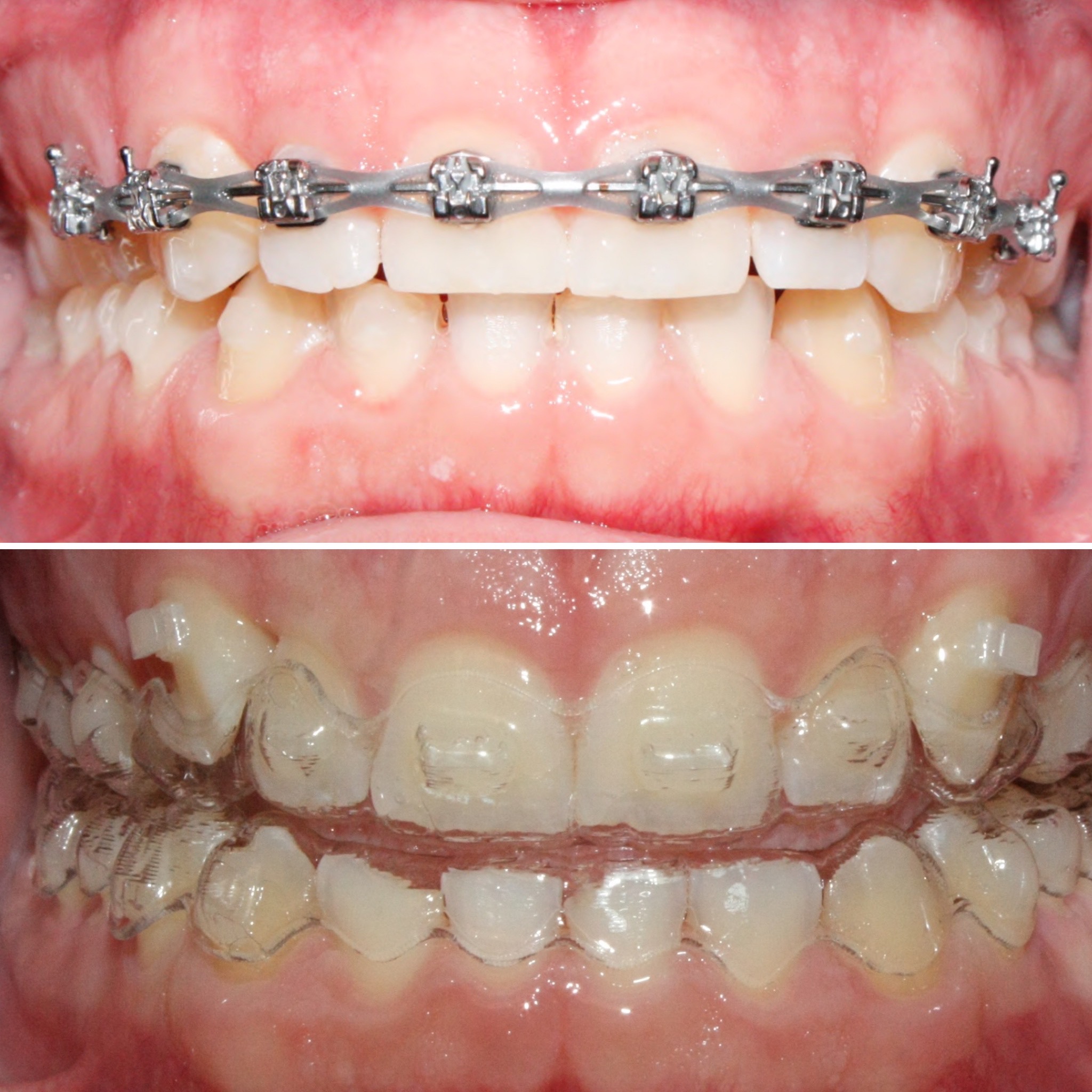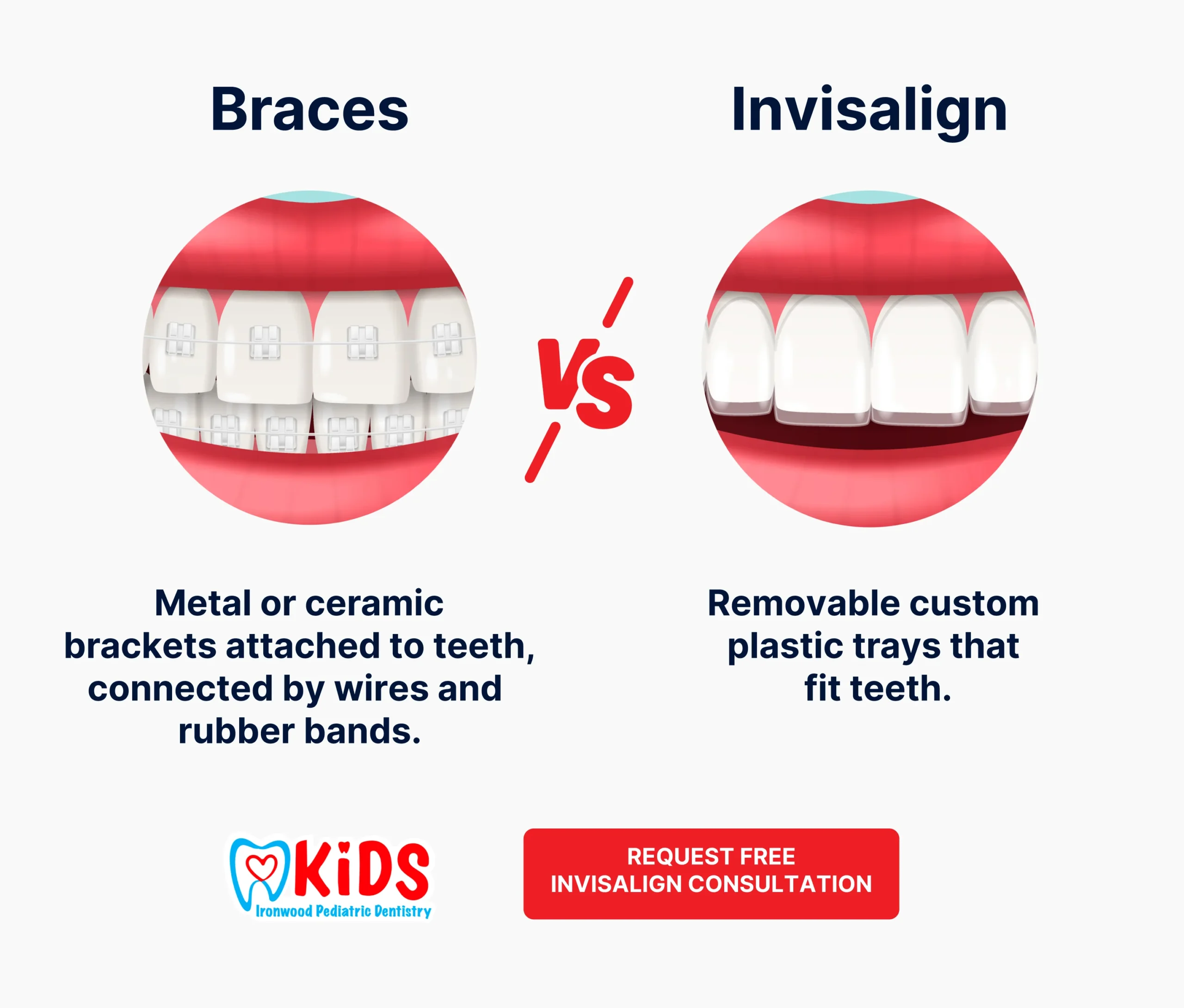Keeping Oral Health While Utilizing Invisalign: Tips for a Smooth Experience
Keeping Oral Health While Utilizing Invisalign: Tips for a Smooth Experience
Blog Article
Invisalign vs. Typical Braces: Which Option Is Right for You?
When considering orthodontic therapy, the selection in between Invisalign and standard dental braces offers a number of important aspects that warrant mindful analysis. Invisalign offers a discreet alternative with detachable aligners, while traditional dental braces offer a more visible yet reliable remedy for serious misalignment.
Review of Treatment Choices

On the other hand, traditional dental braces contain metal brackets and cables that are adhered to the teeth. This method uses continual stress over time to accomplish alignment. While reliable for complicated orthodontic issues, conventional braces need regular check outs for changes and can position difficulties in keeping oral hygiene due to the trouble of cleansing about braces and cables.
Both choices have their advantages, and the selection typically pivots on particular dental conditions, way of life choices, and client conformity. Eventually, consulting an orthodontic professional is critical for figuring out the most suitable treatment plan tailored to private demands. Comprehending the nuances of each option can significantly affect the overall success of orthodontic therapy.
Visual Considerations
A substantial factor influencing the selection in between Invisalign and typical dental braces is the aesthetic charm each therapy supplies. Invisalign aligners are crafted from clear plastic, making them practically undetectable when worn.
On the other hand, typical braces contain metal brackets and cables, which can be much more visible. While developments in orthodontic modern technology have led to the advancement of smaller braces and colored elastics, traditional braces still keep a more noticeable account. For some individuals, the presence of braces may discourage them from seeking needed therapy.
Ultimately, the choice between Invisalign and traditional dental braces might hinge on personal choices pertaining to appearances. Clients that focus on discernment commonly lean toward Invisalign, while those that are much less worried regarding visibility may choose typical dental braces. Comprehending the aesthetic implications of each alternative is essential for making a notified choice that straightens with one's way of life and preferences.
Comfort and Convenience

In terms of benefit, Invisalign aligners are removable, making it possible for individuals to enjoy their preferred foods without constraint and maintain ideal oral hygiene. Cleaning and flossing are streamlined, as the aligners can be taken out throughout these routines, whereas conventional braces call for mindful steering around cords and brackets.
In More Info comparison, typical braces demand regular changes, making them much less convenient for those with hectic timetables. In general, the convenience and ease of Invisalign make it an attractive selection for many people looking for orthodontic therapy.
Therapy Period and Efficiency
While both Invisalign and conventional dental braces work in dealing with dental imbalances, the period of therapy can differ dramatically between both options. Generally, Invisalign therapy can take anywhere from 12 to 18 months, depending on the complexity of the case. The clear aligners function by slowly shifting teeth into their preferred settings, and routine follow-ups with an orthodontist help ensure development continues to be on track.
On the other hand, traditional braces typically require a longer commitment, generally varying from 18 months to 3 years. This results from their fixed nature and making use of braces and cables, which can be more effective for serious misalignments and complex instances (Invisalign). The treatment efficiency of conventional braces is well-documented, as they permit accurate modifications and greater control over tooth movement
Inevitably, the option between Invisalign and conventional dental braces might rest on both the expected treatment period and the details oral concerns at hand. Consulting with an orthodontist is essential, as they can provide customized referrals based on private requirements, guaranteeing the picked method lines up with desired durations and end results.
Expense Contrast and Insurance Options
Expense plays a considerable role in the decision-making procedure for individuals considering orthodontic therapy, whether choosing Invisalign or conventional braces. Generally, the expense of Invisalign varieties from $3,000 to $8,000, while traditional dental braces usually cost between $2,000 and $6,000. Factors influencing these expenses include the complexity of the case, the duration of therapy, and geographical area.
Lots of dental insurance policy strategies provide partial protection for orthodontic treatments, however the specifics can differ extensively. Usually, standard dental braces may be much more frequently covered by insurance plans compared to Invisalign, which some insurers categorize as an aesthetic treatment.
Furthermore, numerous orthodontic practices supply adaptable page repayment strategies, making both therapy alternatives much more available. Patients need to make inquiries regarding prospective funding alternatives and discount rates for ahead of time repayments. Examining the overall cost, including insurance coverage advantages and layaway plan, is crucial for making a notified decision that aligns with both visual preferences and budget factors to this link consider.

Final Thought
In recap, the choice in between Invisalign and conventional braces depends upon multiple factors, consisting of visual preferences, convenience, treatment period, and expense. Invisalign supplies a discreet, removable choice that promotes oral hygiene and nutritional flexibility, while standard dental braces might be preferable for complex oral issues and often come at a reduced price factor. Eventually, assessment with an orthodontist is necessary to assess specific circumstances and establish the most proper treatment option for accomplishing optimum dental placement.
When taking into consideration orthodontic treatment, the option in between Invisalign and standard braces offers numerous vital aspects that warrant careful evaluation.Comparing Invisalign and traditional braces discloses distinctive treatment options for orthodontic improvement.While both Invisalign and conventional dental braces are efficient in fixing dental misalignments, the period of treatment can differ dramatically between the two alternatives.Expense plays a considerable function in the decision-making procedure for individuals taking into consideration orthodontic therapy, whether opting for Invisalign or traditional braces.In recap, the selection in between Invisalign and standard dental braces hinges on multiple elements, including aesthetic preferences, convenience, treatment period, and expense.
Report this page